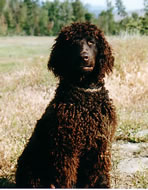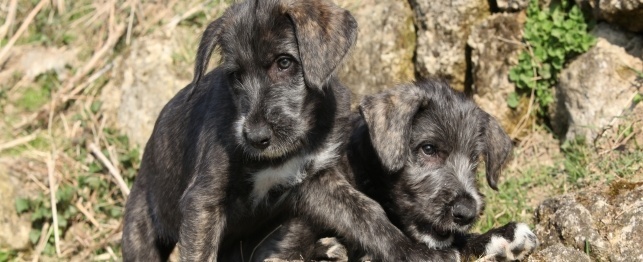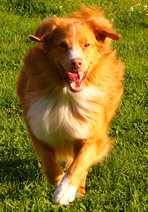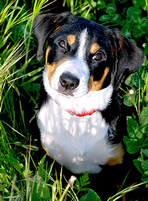
Dogs
The handsome Treeing Walker Coonhound is a descendant of the English and American Foxhounds, even though they are commonly mistaken for "oversized beagles."
Sources say that the Treeing Walker came about when the Walker family in Kentucky developed this hound in the 19th century from the foxhound. Treeing Walkers are known for their speed, endurance, and hot-nosed tracking abilities. As their name would suggest, they excel at treeing small game such as raccoons or opossums.
Treeing Walkers are usually tricolor or bicolor. They have smooth, shiny coats and their slightly drooping ears tend to be large in comparison with their heads. Treeing Walkers are generally lean, and have little tendency to be overweight. They are approximately 20-27 inches in height and they weigh anywhere from 45-70 pounds.
Although Treeing Walkers are generally intelligent and loving, the temperament can vary widely depending on the breeder. Due to their inbred hunting nature, they do best with humans who understand this and provide them with plenty of physical and mental stimulation and exercise, even if they won't be hunted. Daily long walks or runs would be the most effective, and they also love the opportunity for free play off leash. With respect to mental stimulation, they prefer interactive toys to bones or chew toys. Early socialization in a variety of situations can help the Treeing Walker grow into a confident adult dog.
Treeing Walkers generally are good family companions and get along well with children. Due to their hunting nature, small family pets such as cats or rabbits may be seen as prey, so careful introduction and extreme caution should be exercised; they should not be left unsupervised when together. Treeing Walkers may not be the appropriate breed for apartment or condo dwellers, or for those in close proximity to their neighbors, as their loud bay can cause annoyance.
Treeing Walkers can be challenging to train, and many owners liken them to human children in their abilities to reason through situations and test boundaries. They need consistency in their training and respond best to positive reinforcement, as their increased sensitivity to physical or verbal punishment may cause distrust or behavior issues. Because they have such strong hunting tendencies, intensive training must be completed in order to ensure they can respond to a command even when tracking a scent.
Treeing Walkers require occasional baths, mostly after outdoor hunting adventures. They also benefit from weekly brushing and regular nail trims, teeth brushing, and ear cleaning.
Treeing Walkers can be "collectors" and may hoard certain items. Because of their high level of intelligence, they have been known to creatively escape from kennels or gated areas, sometimes using household objects to do so. Their treeing behavior also allows them to scale fences in excess of six feet in height, so backyards should be secured accordingly.
Treeing Walkers are generally healthy with few medical concerns. However, the following have been observed:
The average life span of the Treeing Walker is approximately 10-13 years.
 Irish Water Spaniels: A guide to dogs and puppies of the Irish Water Spaniel breed
The Irish Water Spaniel!
Irish Water Spaniels have extraord
Irish Water Spaniels: A guide to dogs and puppies of the Irish Water Spaniel breed
The Irish Water Spaniel!
Irish Water Spaniels have extraord
 Large Dog Breeds
Large Dog Breeds
Large Dog Breeds
Large Dog Breeds
 Irish Wolfhound Puppies
Irish Wolfhound Puppies
Irish Wolfhound Puppies
Irish Wolfhound Puppies
 Nova Scotia Duck Tolling Retrievers: A guide to dogs and puppies of the Nova Scotia Duck Tolling Retriever breed
The Nova Scotia Duck Tolling Retriever!
The Nova Scotia Duc
Nova Scotia Duck Tolling Retrievers: A guide to dogs and puppies of the Nova Scotia Duck Tolling Retriever breed
The Nova Scotia Duck Tolling Retriever!
The Nova Scotia Duc
 Entlebucher Mountain Dogs: A guide to dogs and puppies of the Entlebucher Mountain Dog breed
The Entlebucher Mountain Dog!
Also known as the Entlebucher
Entlebucher Mountain Dogs: A guide to dogs and puppies of the Entlebucher Mountain Dog breed
The Entlebucher Mountain Dog!
Also known as the Entlebucher
Copyright © 2005-2016 Pet Information All Rights Reserved
Contact us: www162date@outlook.com